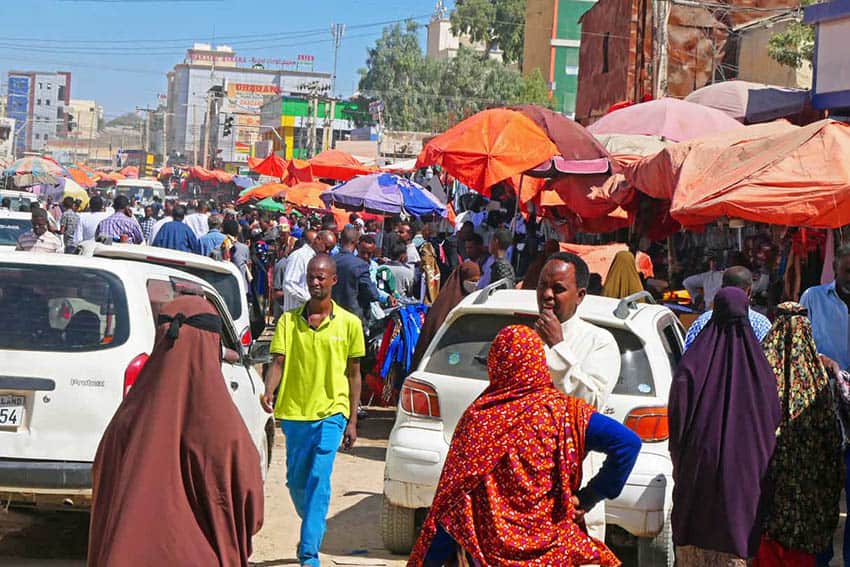
Unknown Somaliland Beckons the Adventurous
By Edward Placidi
Walking down the street in the dusty capital city, Hargeisa, I was kept busy responding to the ubiquitous shout-outs: “How are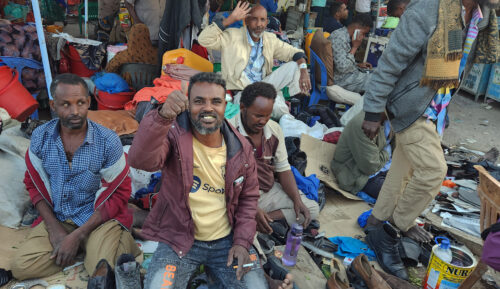 you?” “Where are you from?”
you?” “Where are you from?”
For the most part, the questions are the only English they know. But they were delighted I was there visiting their ghost country, which officially does not exist.
In one small way, it was recognition that the Republic of Somaliland is a nation. And that is very important to them. Travel to Somaliland is not common.
Somaliland may be the least-known country on the planet (I encountered one other tourist during the week I was there) – in large part because no other country recognizes it as independent.
It broke away from Somalia after a brutal civil war more than three decades ago and, unlike its former motherland, established itself as a relatively stable, peaceful democracy.
Hargeisa was largely destroyed in the war and has made only a partial recovery: Buildings are dilapidated and plastered with a profusion of rusted and faded signs. Some main streets are paved but most are dirt, so rutted and rocky in some places they are best negotiated with a four-wheel drive vehicle.
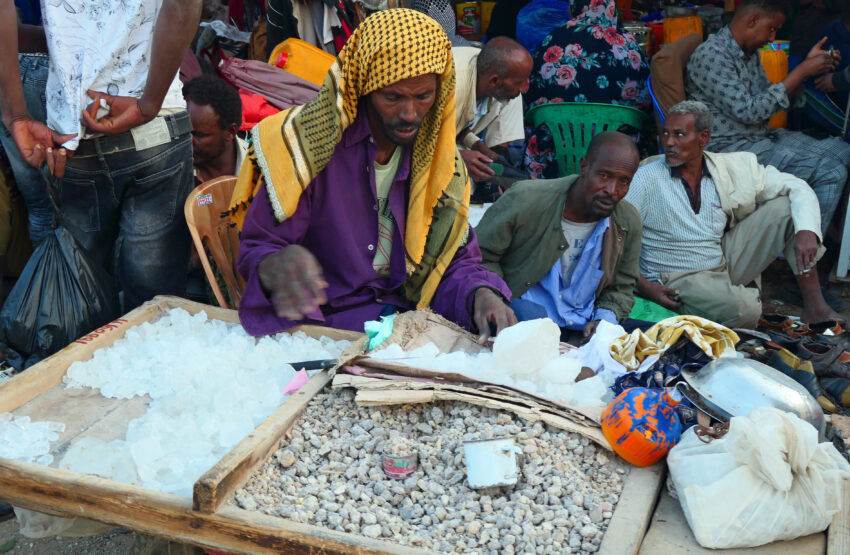
But what it lacks in infrastructure it makes up with exuberance and spirit. Without significant landmarks and museums, Hargeisa is all about the hum, pace, and soul of street life, which is in abundance.
An Endless Marketplace
The entire city center has evolved into one endless marketplace, reaching a frenzied zenith starting in the late afternoon after the often extreme heat of the day and chat time: As throughout the Horn of Africa, Hargeisa shuts down every afternoon while most men, and some women too, chew the stimulant leaves trucked in from Ethiopia. Then the explosion back to life – with unconstrained energy and enthusiasm ‒ is extraordinary.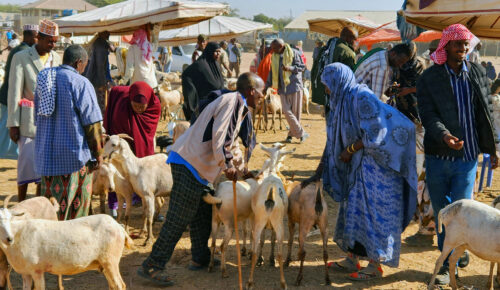
The permanent stalls and shops are joined by an invading army of street sellers, many bringing in their wares by wheelbarrow, turning it into a rolling stand.
Numerous lights come on, seemingly half the population pours into the streets, and a great mingling and merging of commerce and culture ensues.
It’s an exuberant expression of Somaliland life. The show of color – produce, goods, people’s clothing, and more in every hue and shade – is spectacular.
With everyone either buying or selling, this is when many make their daily money to buy food and pick up personal and household needs.
The surge on the streets is all-encompassing like you’re getting on a subway car. It’s so thick with humanity you have to sidle, squeeze and maneuver your way through. Everything under the sun is being sold from produce and shoes to luggage and meat. It’s one of the most exuberant market scenes anywhere.’
The Livestock Market
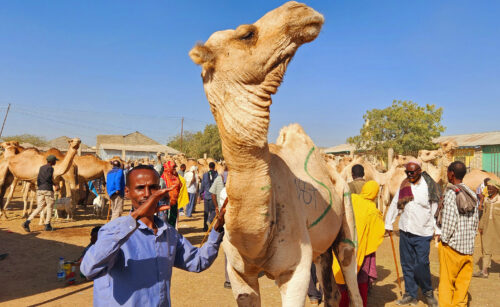 The Livestock Market (colloquially known as the Camel Market though goats, sheep, and cattle also are sold) claims to be the biggest in the world.
The Livestock Market (colloquially known as the Camel Market though goats, sheep, and cattle also are sold) claims to be the biggest in the world.
Traditions endure in an isolated place like Somaliland: Animal husbandry is still a major activity here and livestock is a chief export, notably to Saudi Arabia to feed the millions on the annual Haj pilgrimage.
The market was reminiscent of a large country fair with thousands of animals for sale, food being cooked in tents and under umbrellas, and people sipping tea, and talking in groups.
With most animals brought in by individual owners, buyers circulate, evaluate animals, ask questions, and bargain. Camels steal the show, hundreds of the sassy ungulates jostling for space and position, owners using sticks to keep them in line.
Sitting down in a restaurant after the Camel Market, I was struggling to be understood by a waiter when a well-dressed man at the next table began translating in perfect English. Then he turned his chair and, uninvited, joined me for lunch. An hour of animated conversation later, he insisted on paying and took me to see the building he recently completed to house his building materials company.
 He’s a returnee: his family fled to Canada during the civil war, when he was six, but he returned in 2010 to start what has become a very successful business.
He’s a returnee: his family fled to Canada during the civil war, when he was six, but he returned in 2010 to start what has become a very successful business.
An Insider’s Tour of Hargeisa
Mustafa became my new friend and de facto tour guide, giving me an insider’s tour of Hargeisa and parts of western Somaliland. His hospitality and generosity were extraordinary.
We drove through the surprisingly lush green belt of Arabiyo – a rarity in Somaliland with tree-lined roads and small-scale agriculture ‒ on to the flat, arid desert and the bustling border town of Togwojole, a thriving smuggling hub.
Mustafa’s store there does a big portion of its business with Ethiopians who will get the goods into their country bypassing customs. The sense of intrigue was palpable; subterfuge wafted on the breeze.
I learned a great deal about Somaliland from Mustafa, but it was a taxi driver who encapsulated the country with the answer to a simple question: “How is life here,” I asked. “Life is good,” he said, “because we can go anywhere without security.”
Between the lines, he was saying “unlike in dangerous Somalia.” It was largely why the civil war was fought and why they sought independence. Security remains a serious issue and subject here.
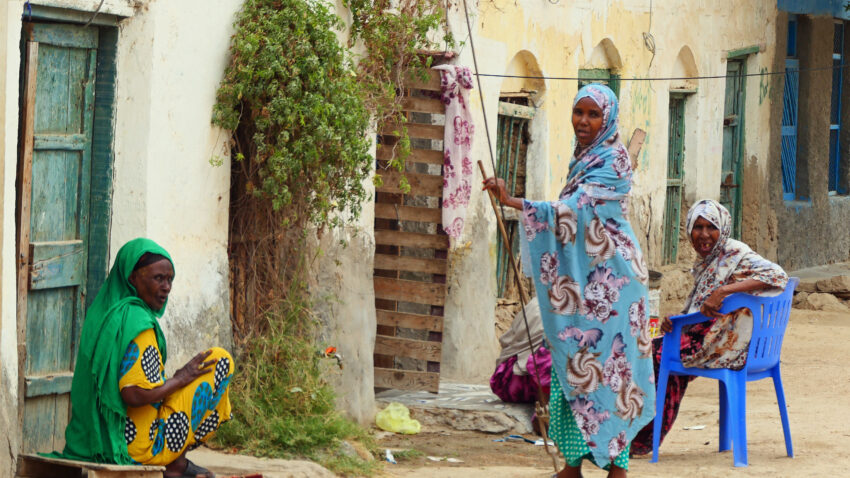
Safe at Any Time
Moneychangers stack large amounts of currency at their street stalls without the worry of being robbed. I was told repeatedly that I can go anywhere in Hargeisa at any time of the day without concern, and that was true.
On the drive with Mustafa to Togwojole, however, we answered questions at five police checkpoints ‒ in both directions.
Going to dinner with Mustafa at the Maan-Soor Hotel, where the movers and shakers of business and government hob-nob, we were interrogated at the entrance by three guards armed with AK-47s. Driving in, we slowly weaved around three large blocks of cement designed to preclude forced entry, then were checked with a security wand before being allowed into the restaurant.

Perhaps the most emphatic comment on security is that the government does not allow foreigners to travel outside of Hargeisa without an armed guard and driver.
On a trip to the famous cave paintings of Laas Geel and the ancient port of Berbera, my driver pulled into a gas station where, a Kalashnikov slung over his shoulder, a soldier hopped in and we were off.
Over the next two days, we would go through 10 police and military checkpoints, with my passport repeatedly inspected.
Laas Geel
In two hours ‒ on an excellent road, the country’s best, built by the UAE which is working to develop trade with Somaliland that will go through Berbera ‒ we reached the turnoff for Laas Geel.
While Laas Geel’s exact age is unknown, with estimates ranging between 5,000 and 10,000 years old, the depth of color and detail is staggering both for the time period it was created and the fact it has endured so intact.

Surviving the millennia under the protection of rock overhangs, the wall paintings depict humans, their livestock, mostly cows, and other animals including dogs, giraffes, and elephants.
They are evidence of the first, or among the first, people to domesticate animals, and possibly the first pastoralist society. The impressive paintings are significant in the quest to chart human evolution.
There are references to Berbera being a trading hub going back 2,000 years, but virtually nothing remains of its past. The oldest quarter, called Darole, is a maze of picturesque sand streets, reminiscent of the days of Arabian sailing dhows, lined with brilliantly colorful, tumbledown buildings.
The oldest structures, Ottoman houses dating from the mid-1800s, are crumbling or already completely collapsed.
Berbera, the Second City of Somaliland
Unlike densely packed, bustling and driven Hargeisa, Berbera, Somaliland’s second city, is slow and relaxed with wide open spaces. Large open-air cafes are packed with men chewing chat, talking, and sipping tea. Virtually all the men are in Western dress, while in Hargeisa it’s a mix of traditional and Western.
The Somaliland aversion to being photographed ‒ some even protest when you are shooting a building or camels ‒ is even more pronounced here. But like in Hargeisa, I am welcomed frequently as I walk along.

Fishing is a major activity in Berbera, supplying the fish markets and restaurants of Hargeisa. The fresh seafood here is exceptional. The grilled whole fish ‒ a sweet and succulent treat served with rice and mild green and hot-red chili sauces ‒ I had at the waterfront Al-Xajaat Restaurant was the best meal I had in Somaliland.
Somaliland is a one-of-a-kind destination luring a trickle of adventuresome and curious travelers. “America very good!” was the standard answer ‒ with a big smile and eyes lighting up ‒ when I revealed I am from the USA.
The National Civil War Memorial is a Russian Mig mounted on a pillar, one of the planes sent by then-Somali dictator Siad Barre to bomb Hargeisa into submission. The shot-down plane is now a symbol of their freedom.
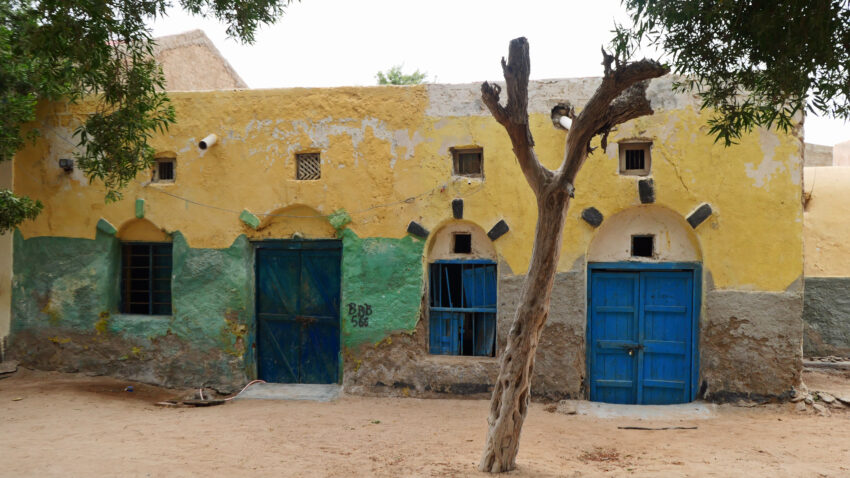
As a very conservative Muslim country, alcohol is illegal ‒ tea and fresh-squeezed fruit juices are the staple drinks ‒ and all women, including young girls, are swathed in usually colorful flowing robes, the majority veiled.
The camel market is a scene right out of Aladdin. For the visitor, it’s an intriguing, brief sojourn in an isolated and forgotten but welcoming land.
While the exuberance and energy are not only palpable but also infectious, behind it all is a deep pride in having survived as their own independent enclave for more than three decades.
Despite being a poor, ramshackle country passed over by the world, this has brought them joy.
 Freelance travel writer/photographer Edward Placidi has lived and traveled in 106 countries and penned articles for numerous newspapers, magazines, and websites. When not traveling he is whipping up delicious dishes inspired by his Tuscan grandmother who taught him to cook. A passionate Italophile and supporter of the Azzurri (Italian national soccer team), he lives in Los Angeles with his wife Marian.
Freelance travel writer/photographer Edward Placidi has lived and traveled in 106 countries and penned articles for numerous newspapers, magazines, and websites. When not traveling he is whipping up delicious dishes inspired by his Tuscan grandmother who taught him to cook. A passionate Italophile and supporter of the Azzurri (Italian national soccer team), he lives in Los Angeles with his wife Marian.
- Fall Clothing for Your Travels - August 30, 2024
- Mekong Chronicles: The River That Shaped Southeast Asia - August 28, 2024
- Gadgets and Goodies You Might Enjoy - August 27, 2024



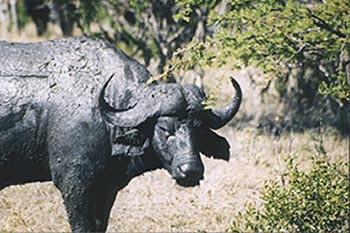


its nice to know that in this part of Somaliland there is some better life not known to the world now has come to light for us to think about and possibly consider going thank you.